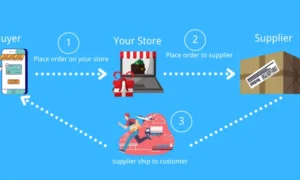Are you eager to embark on an enthralling journey through the captivating world of transportation? The ability to move from one place to another has undoubtedly transformed our lives, offering us the freedom to explore new horizons. In this article, we will dive into the diverse modes of transportation, from land to sea, and uncover the distinctive characteristics that have shaped our modern society. Join us as we fasten your seatbelts and take an exhilarating ride through the various types of transportation that have left an indelible mark on our world!
Exploring the Different Types of Land Transportation
Land transportation encompasses a multitude of options, each with its own unique benefits and drawbacks. Among the most prevalent are road transport, which includes cars, buses, and trucks, as well as rail transport, represented by trains and subways. Additionally, there are lesser-known alternatives such as cable cars and monorails.
Road transport, led by the ubiquitous automobile, stands as the most common mode of land transportation. Cars offer unparalleled convenience, granting us the freedom to travel short distances and embark on thrilling road trips. However, the cost of ownership and maintenance, coupled with environmental concerns due to pollution, remains a challenge.
Buses serve as another popular form of land transportation, providing cost-effective options for commuting and group travel. Yet, they may be slower and less comfortable during peak hours. Meanwhile, trucks play a vital role in commercial transport, though their extensive size and expense set them apart from other road vehicles.
Rail transport stands as a fast and efficient option for long-distance travel. Trains zip across vast expanses, connecting cities and regions with speed. However, they may be costly and limited in their destinations.
Cable cars and monorails, though less common, offer intriguing alternatives. Cable cars conquer hilly terrain with ease, while monorails operate on a single rail, showcasing innovation in transportation design.
The Fascinating World of Sea Transportation
Sea transportation, frequently employed for shipping goods, presents an array of possibilities for transporting cargo via ships, boats, or barges.
Shipping goods through the sea proves exceptionally efficient and cost-effective. Ships, with their capacity to rapidly carry vast quantities of cargo over long distances, stand out as the workhorses of the seas. Boats and barges complement this mode by reaching destinations inaccessible to larger vessels, such as remote islands and shallow waterways.
When choosing sea transportation for shipping goods, proper packaging to prevent damage during transit is paramount. Opting for a suitable mode of sea transport tailored to the specific needs of the cargo is essential. Finally, partnering with a reputable shipping company ensures reliable and timely service.
The Sky-High Experience of Air Transportation
Air transportation, known for its speed, connects distant locations in record time. However, this convenience comes at a higher cost compared to other modes of travel. Airplanes excel at conquering geographical obstacles, traversing mountains and oceans with ease, rendering them a versatile choice.
Nonetheless, flying can be stressful, with the need for security checks and baggage claim procedures. Weather conditions can lead to delays or cancellations, adding to the challenges. Safety concerns also arise, as plane crashes have occurred in recent history.
To enhance your air travel experience, allow ample time at the airport to avoid stress. Packing light will spare you the burden of heavy luggage. Additionally, choosing a comfortable seat with sufficient legroom will make your flight more enjoyable.
Addressing the Environmental Impact
Transportation is a significant contributor to environmental pollution, with cars and trucks emitting harmful air pollutants and greenhouse gases. These pollutants are linked to various health issues, including respiratory infections, heart disease, and cancer. Water pollution also arises from oil and contaminants released by vehicles, negatively impacting aquatic life and drinking water sources.
To mitigate the environmental impact of transportation, transitioning to cleaner and more efficient technologies is vital. Investment in greener vehicles and alternative fuels can significantly reduce pollution. Additionally, creating communities designed for pedestrian-friendly travel and improving public transit options will encourage sustainable transportation practices.
Conclusion
In conclusion, transportation has been a remarkable force driving human progress and exploration. As we continue to witness advancements in land and sea transportation, we also face the challenge of addressing environmental concerns. By embracing cleaner technologies and fostering sustainable urban planning, we can create a future where transportation becomes a powerful force for positive change, connecting people and cultures while safeguarding our planet. So let us celebrate the incredible journey of transportation and embark on a sustainable path to the future!


































